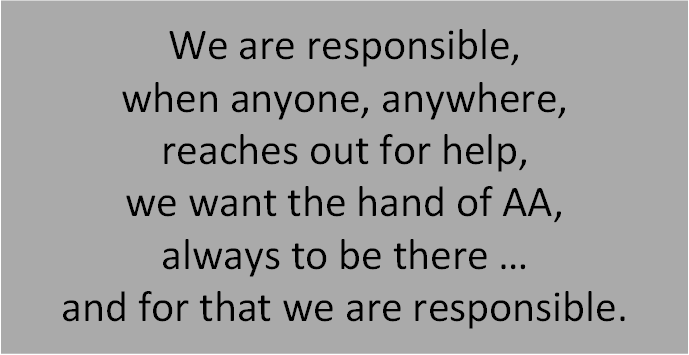The influx of nonalcoholic drug addicts into A.A. meeting halls is a matter of growing concern to A.A. groups in the U.S. and Canada. Groups are also concerned over the effect that alcoholics with dual or multiple addictions may exert on the substance of A.A. meetings.
Emma G., of Springfield, Mo., wrote of “the infiltration of narcotic addicts, who have the dual problem of narcotics and alcohol but lean more to the narcotic addiction. In meetings, they identify themselves as ’chemical dependents’ and ’drug addicts.’ We see the original alcoholic, whose total problem was alcohol, becoming less and less [visible].”
“The original alcoholic”? Yes, there does seem to be a widespread impression among the membership that the problem of dual addiction is new in A.A. But on p. 32 of “Dr. Bob and the Good Oldtimers,” we may read the following: “Instead of taking the morning drink,… Dr. Bob turned to what he described as ’large doses of sedatives’ to quiet the jitters . . .”
Nor was alcohol the total problem of co-founder Bill W. In the article “Those ’Goof Balls’ “in the November 1945 issue of the A.A. Grapevine, he had this to say: “Morphine, codeine, chloral hydrate, Luminal, Seconal, Nembutal, Amytal, these and kindred drugs have killed many alcoholics. And I once nearly killed myself with chloral hydrate. Nor is my own observation and experience unique, for many an old-time A.A. can speak with force and fervor on the subject of ’goof balls.’”
Apparently, changes taking place outside our Fellowship make the problem seem more urgent today. Referring to a local treatment center, an A.A. newcomer, Katherine L., of California, wrote G.S.O., “The physicians and counselors stressed the fact that all addicts, whether addicted to alcohol or to another chemical, were similar in personality and situation. We are all addicts; it is our drug of choice that varies.” She went on to state her belief that the reason alcohol was emphasized early in the history of our Society was that it was the most commonly used drug at the time – other drugs were not so readily available.
In recent years, countless letters have arrived at G.S.O. about treatment centers where staffs view both the dually addicted alcoholic and the nonalcoholic drug addict as “chemically dependent.” The centers may advise both to attend A.A. meetings.
Some groups, through their institutions representatives, have attempted to explain to such centers that it is not the intent of A.A., as a fellowship, to be exclusive; rather, in order to be effective with alcoholics who seek help, A.A. must avoid multipurpose activity. They make it clear that dually addicted alcoholics are eligible for A.A. membership and may receive help with the alcoholic problem at A.A. meetings. They also point out that other fellowships exist to help with the drug problem – for example, Narcotics Anonymous and Pills Anonymous.
An often-heard cry from A.A. groups is that dually addicted alcoholics tend to dominate A.A. meetings, laying the emphasis on their drug problem. Some A.A. members who are not dually addicted become resentful, because they cannot identify; also, they feel that the meetings are being disrupted and divided. A.A. members are turned off, as well, by nonalcoholic drug addicts, who also tend to dominate meetings. Both concerns are reflected by the following excerpts from mail received at G.S.O.:
From Minneapolis, Minn., G. J. L. refers to “infiltration” by nonalcoholic drug addicts: “Many of our good members are leaving in disgust, because it is getting more difficult by the day to find a good A.A. group where the philosophy is not diluted to the point where our ’common problem’ has become a phrase of the past. We are desperate!”
Brian S., of Sydney, Australia: “Can people who are addicted to drugs other than alcohol speak at an open A.A. meeting?”
From Lindsay, Ont., Ted H.: “Can persons who let it be known that they are using drugs other than alcohol carry the message to the still-suffering alcoholic?”
Letters pour in requesting G.S.O. to make rulings on such questions, as on many other problems. The office has received at least one letter addressed to the “Governing Body”! Of course, Tradition Two applies just as surely to the “trusted servants” at your G.S.O. as it does to those in your home group. Staff members asked for “rulings” often just point out where helpful guidance can be found in our Conference-approved A.A. literature, which is based on long and wide-ranging Fellowship experience.
The book “Twelve Steps and Twelve Traditions” is frequently cited, and the pamphlet “A.A. Tradition. How It Developed” provides an insightful introduction. “The A.A. Group” is another valuable source. For instance, it makes a distinction between a “meeting” and a “group” (p. 33) and even notes that special “meetings” can fill the extra needs of dually addicted members.
In the pamphlet “Problems Other Than Alcohol,” Bill W. expresses his conviction that a drug addict with “a genuine alcoholic history” is eligible for A.A. membership, but also concludes that “there is no possible way to make nonalcoholics into A.A. members. We have to confine our membership to alcoholics, and we have to confine our A.A. groups to a single purpose. If we don’t stick to these principles, we shall almost surely collapse. And if we collapse, we cannot help anyone.”
Problems Other Than Alcohol” is a reprint of an article first published in the A.A. Grapevine of February 1958. The principles Bill calls upon stand unchanged, but the scope of the problem has certainly increased, as our membership surveys show. Between 1977 and 1980, the percentage of A.A.’s reporting dual addiction on survey questionnaires rose from 18% to 24%. Among those who had come to the Fellowship during that three-year time lapse, 27% identified themselves as dual addicts.
Again.neither G.S.O. nor the General Service Board nor the General Service Conference is going to issue any “rulings.” G.S.O. is grateful for all the letters raising questions vital to the Fellowship. But the answers must come from the same source the experience of the autonomous groups.
Has your home group found effective ways of coping with this complex problem?
As published in
News and Notes from the General Service Office of A.A. ® Box 459 Vol. 27, No.2 /April-May 1982 www.aa.org



